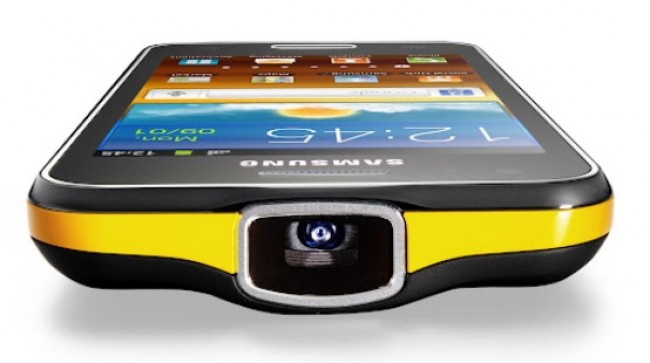New Hope School, a beacon of hope and education for children with special needs in Pretoria, is set to receive a generous donation of…
Hands on with the Samsung Galaxy Beam


When I first read about the Samsung Galaxy Beam, I was incredibly excited. A phone, with a built-in projector. Too cool. Naturally I leaped at the chance to get hands on with it.
To understand why I was excited, you have to understand that one of my favourite ever TED talks is by Pranav Mistry and involves him demonstrating Sixth Sense, a device that combines motion sensor technology with a wearable projector and pint sized computing.
When I first watched Mistry’s talk, I thought it was the future of personal computing. A couple of hundred articles and some hard time in the space later, I’m convinced of it, although I think that future may be a bit further off than I once did.
That’s why I was excited when I heard about the Galaxy Beam. It seemed like an important stepping stone on the path to a future where having a large display doesn’t mean sacrificing mobility.
If this makes it sound like I was being suckered in by the hyperbolically idyllic ads for the device, think again. I’m well aware of the current limitations of the type of projector built into the Galaxy Beam.
Nonetheless, I would hold back my criticism until I got some time with it.
Projecting anger
The projector is exactly as limited as I thought it would be. That is to say, very. The room it was demonstrated in was about as dark as the inside of a sack of coal, wrapped in black plastic bin liners and thrown down a well for good measure.
In that kind of lighting, the image projected was just about passable and it was, admittedly, a load of fun seeing my movements across the screen mirrored on the wall in front of me.
Let’s get real for a moment here. Unless you’re a vampire, or a werewolf for that matter, are you really willing to go to all that effort to darken a room in your house so you can show off your new projector smartphone?
Introduce the slightest bit of light and the projector can’t cope. You’re left looking at what might be the projection from your phone, or what might be some dirty smudges that you’ll need to go over with household cleaner later.
The thing is, the performance of the projector should take nothing away from the fact that Samsung has managed to actually stick one into a phone without it looking like something vomited out a 12 year old’s scrapbook. You know, the kind of thing usually entitled “My super awesome invention!”
A svelte, snug smartphone
The Galaxy Beam is actually pretty svelte and doesn’t feel at all awkward to hold. In fact, it’s a little narrower than the Galaxy S II, so it fits pretty snugly in your hand. It’s sacrificed a little screen real estate because of it, but I’m guessing Samsung is hoping you’ll be sold on the projector and won’t notice.
A smaller screen has done nothing, however, to diminish how silky-smooth the screen feels. There are few phones that can make you feel as if your fingers are gliding over a substance which is at once solid and liquid. The Beam is one of them.
The one major let down is that the phone ships with Android 2.3, rather than Ice Cream Sandwich (ICS). Given the elusive game of chase-the-rabbit Google seems to have been playing with ICS, that’s hardly surprising.
Then again, none of this matters. You’re not going to buy the Beam because of its technical specs. If you wanted that you’d get an S II, or Galaxy Nexus. You’re buying this because it has a projector.
At this point, I should mention that there have been other projector phones in the past – none of them terribly successful. What’s different about the Beam is that it has generated enough excitement to at least have a whiff of commercial viability.
That doesn’t mean I’m about to rush out and get one. It also doesn’t mean the Galaxy Beam isn’t a stepping stone on the path to the future – because it is. I just hope that Samsung doesn’t decide to abandon the path it’s on.
Early versions of new technologies are funny things. Remember the first attempts at camera phones – when you had to attach the camera to the phone? Looking back, that seems ridiculous, but it was an important step toward where we are today with mobile technology. I have a funny feeling the Galaxy Beam might just be the same kind of thing.
The Galaxy Beam is due sometime in April 2012, for an estimated price of US$500.
